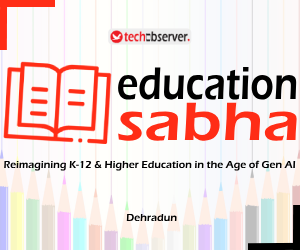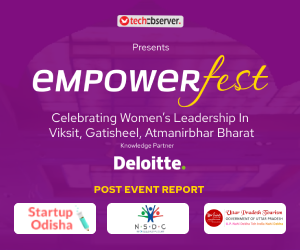Public sector may start embracing the power of ‘Innovation and Design Thinking (IDT)' to foster a culture of transformation away from traditional methods, create new opportunities, and withstand market competitiveness. While adopting innovation would help generate new ideas and solutions, design thinking would necessitate a problem-solving approach that is ‘citizen-centric and iterative,' focused on achieving the desired solution.
It is especially important as PSUs have to deal with the scale of over 1.40 billion people and the various demographic, geographic, rural-urban, literacy, education, digital literacy, and economic conditions they encounter. At the same time, when it comes to those sectors, regions, and societies that are economically unviable, have long payback periods, and do not fit any financial model for the industry and private sector organisations, it is the public sector that withstand that pressure, working for the greater good and for the common masses aiming to join the mainstream of development.
Therefore, it is important that PSUs augment and prepare themselves for the new age demands, expectations, and varying dynamism. One of the latest tools PSUs can explore is embracing the power of ‘Innovation and Design Thinking,' be it a product, service, or scheme. The aim is to understand, observe, and experience the mind and heart of citizens and beneficiaries based on their needs and preferences. This would involve how PSUs prioritise empathy, creativity, and collaborative ideas and intelligence to develop solutions that closely resonate with citizens.
The Beginning:
It would start with engaging citizens to understand their needs, current challenges, and aspirations to join the mainstream of development. This may involve intense citizen surveys, interviews, field problems, and observations to gather insights. Make sure that the survey includes a varied set of users, be it youths, kids, senior citizens, women, and categories such as farmers, students, illiterate, semi-literate, professionals, and their economic conditions. In DT terms, we call this phase ‘Empathise.'
Then comes the ‘Define' phase, where you need to use the gathered inputs to define the core issues faced by the citizens and beneficiaries and the opportunities that PSUs can harness. It's about reconciling the information collected during the empathise phase to identify the problem statement and key issues to address. To understand better, you may create an analogy to the traditional method of a ‘Detailed Project Report (DPR).' We must note that IDT is away from traditional and beyond the obvious.
The Ideation Phase:
Here you can harness the knowledge, experiences, and power of your workforce and employees engaged in product development or service delivery to address the specific problem being faced by the citizens, by generating a wide range of ideas. We need to encourage creativity and diversity of perspectives during brainstorming sessions. To give an analogy in the traditional way, you are familiar with ‘Business Process Re-Engineering or Government Process Re-engineering (BPR/GPR).' Make sure IDT is away from traditional and beyond the obvious.
Prototype and Test Phase:
This phase involves the development of a prototype or Proof of Concept (POC) of potential solutions. These include wireframes, sketches, modelling, etc., such as developing a basic version of software or an application using rapid prototype software or wire-framing tools. This would involve visual representation of user interface (UI) and user experience design (UX) using design software. The main aim of the prototype is to test and validate key aspects of the solutions being proposed, such as usability, functionality, performance, scalability, etc.
Once the prototype is ready, it requires gathering feedback from citizens and users by testing the prototypes, which would involve usability testing, focused survey groups, and lead users to understand how well the proposed solutions meet user and citizen needs. Feedback from testing the prototype would entail further development and refinement, iterating through the design process until a solution is developed that effectively addresses the needs of the citizens, and then proceeding to full-scale production and implementation. I strongly recommend that the entire IDT framework can be included in the DPR/BPR/GPR/RFP process.
My own experience suggests that IDT would greatly help PSUs develop industry engagement business models, adjust to organisational cultural shifts, adopt change management practices, and embrace the power of technology to its fullest. We should aim towards positioning India's PSUs into a global powerhouse that involves various strategic initiatives to improve and enhance efficiency, innovation capabilities, market competitiveness, and global presence. This would also need a clear strategic vision and roadmap, including strong commitment from board members, senior management, and officials. The need of the present and promising future is to invest in R&D to develop cutting-edge technologies, products, and services that meet global standards and address emerging market needs catering to Indian and global markets.
The need of the hour is to develop strategic partnerships and collaborations with leading global companies, research institutions, and industry associations to access new markets, emerging technologies, and best practices. In my view, joint ventures and technology transfer agreements would help accelerate innovation and market expansion. To boost operational efficiency, PSUs need to focus on end-to-end digitisation, automation, lean management practices, and an institutional mechanism to drive, be agile and responsive to market dynamics, align with corporate governance ethics, and follow the mantra of ‘Minimum Government and Maximum Governance,' a powerful empowerment tool ideated by the Hon'ble Prime Minister of India to create a system where administration and good governance are run without unnecessary interference.
I strongly advocate that leveraging the power of technologies such as Cloud, Big Data, AI, GenAI, IT-OT convergence, 5G, etc., would not only accelerate reaching the desired scale with speed but also help in building required security and privacy measures for the PSUs, enhancing their significant roles in the country's economy, spanning various sectors like energy, telecommunications, banking, agriculture, healthcare, education, etc.
Talent development, skill enhancement, and effective change management practices would further help PSUs to adopt market diversification and exploration goals both at domestic and international markets, reducing dependency on specific industries or regions, making them distinct in their identity, contributing to the development of export-oriented strategies, and leveraging India's competitive advantage to increase market share and revenue from the global market. Added with sustainable development and CSR, PSUs can help create long-term value and enrichment for society, driving economic growth and prosperity of the nation for a Greater Good and Global Good.
“To my knowledge, even in the Mahabharata, an ancient Indian epic, there are several instances where IDT principles can be observed, albeit in a different cultural context. One such example is the character of Arjuna, who demonstrates strategic planning, problem-solving, and adaptability in various situations throughout the epic.”








